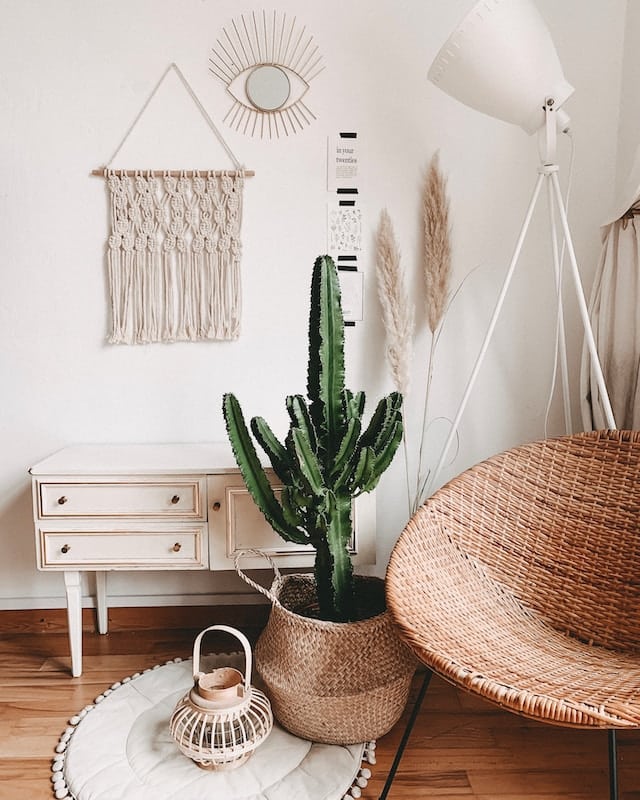In the world of interior design, style is a reflection of one’s personal taste, individuality, and often, heritage. It’s about creating a space that not only provides comfort and functionality but also tells a story. This story could be about who you are, where you’ve come from, or the places you’ve visited and loved. One significant trend in the modern interior design industry is the celebration of global styles, an amalgamation of various cultural elements that transform ordinary homes into pieces of international art.
Embracing Eclecticism: An Overview of Multicultural Design
Multicultural interior design is about embracing eclecticism. It’s all about creating a unique style that incorporates various elements from different cultures. This design approach offers an endless palette of colors, materials, and unique pieces that make your home truly your own.
A lire en complément : Building a backyard pond: a guide to creating a water oasis
The essence of this design style is its flexibility. It allows you to mix old and new elements, marrying classic art pieces with modern furniture. The beauty of this approach lies not only in its visual appeal but also in the sense of personal connection it creates—every item in your space can tell a story, contributing to an aesthetic that is uniquely yours.
Integrating Cultural Styles: The Art of The Mix
The art of multicultural interior design is in the mix. This design style requires a delicate balancing act, harmoniously blending diverse elements to create a cohesive and visually appealing space.
Cela peut vous intéresser : Acoustic design: soundproofing your home
To integrate different cultural styles into your home, start with the larger elements such as furniture and rugs. Choose pieces that represent a specific culture or style that you love, whether it’s the sleek lines of modern Scandinavian furniture or the intricate patterns of a traditional Persian rug. Once you’ve chosen these foundational pieces, you can build upon them with smaller items like decor, art, and accent pieces.
Remember, the key to a successful multicultural design is balance. Try not to overwhelm one style with another—each element should contribute to the overall aesthetic while maintaining its uniqueness.
Natural Materials and Colors: The Foundation of Global Styles
One common thread amongst global design styles is the use of natural materials and colors. Whether it’s the richly hued woods of African design or the soft, neutral tones of Scandinavian interiors, employing natural elements can help to ground your space and create a sense of harmony and tranquility.
Experiment with different textures and materials—think woven baskets, rustic wooden furniture, or soft linen throws. Don’t be afraid to mix and match; the beauty of multicultural design is in its diversity.
In terms of color, opt for a palette that reflects the styles you’re incorporating. For instance, if you’re drawn to Mediterranean design, consider using warm, earthy tones like terracotta and olive green. On the other hand, if you’re inspired by Japanese minimalism, a palette of soft, muted colors might be more fitting.
African-Inspired Living Spaces: Bold and Eclectic
African design is marked by its bold colors, rich textures, and handcrafted pieces. Integrating elements of African style into your interior design can create a dynamic and vibrant space. Start with the basics: opt for furniture made from natural materials like wood and rattan. For decor, look for handcrafted pieces that tell a story.
Add a pop of color with vibrant textiles. African design often features bold geometric patterns, so consider incorporating these into your space with rugs, throw pillows, or wall hangings.
Remember, African design is all about celebrating craftsmanship and individuality, so don’t be afraid to go bold. However, maintain balance to ensure your space doesn’t become visually overwhelming.
Modern Eclectic: A Unique Blend of Styles
Modern eclectic design is all about breaking the rules. This style marries traditional and contemporary elements, creating a unique and personalized aesthetic.
To achieve a modern eclectic look, start with a neutral base. Opt for simple, clean-lined furniture in neutral tones. This creates a blank canvas that you can build upon with a mix of modern and traditional pieces.
Next, add in color and pattern. Don’t be afraid to mix different styles, textures, and colors—the key is to find a common thread that ties everything together. This could be a specific color, a certain type of material, or a motif that is repeated throughout your space.
Remember, the aim of modern eclectic design is to reflect your individual taste and style. So, choose pieces that speak to you and don’t be afraid to experiment.
In Conclusion
Multicultural interior design opens a world of possibilities, allowing you to create a unique and personalized space that tells your story. By embracing eclecticism and integrating diverse elements from various cultures, you can transform your home into a celebration of global styles. Whether you’re drawn to the bold colors and rich textures of African design, the clean lines and neutral tones of modern Scandinavian style, or the unique blend of the modern eclectic approach, there’s a multicultural design style that’s perfect for you.
So, explore different cultures, experiment with various styles, and most importantly, have fun with it. After all, your home is a reflection of you—it should be as unique and individual as you are.
The Boho Style: A Tapestry of Cultural Fusion
The Bohemian or ‘Boho’ design style has been a popular choice for those seeking a vibrant and culturally diverse aesthetic in their living spaces. This style is all about embracing a mix of colors, patterns, and textures to create a space that feels warm, inviting, and full of life.
The Boho style is characterized by its cultural fusion. With its roots in the free-spirited lifestyle of traveling artists, writers, and musicians, it combines elements from various cultures to create a truly global aesthetic. This style is not just about visual interest; it also reflects an open-minded attitude and an appreciation for diversity.
To incorporate the Boho style into your home, start with a color palette that includes a mix of earthy tones and vibrant colors. Natural materials like wood and leather are classic Boho choices, but don’t be afraid to add a touch of glamour with metallic accents or a statement piece of furniture.
Textiles play a crucial role in the Boho style. Think colorful rugs, patterned cushions, and layered blankets to create a cozy and welcoming atmosphere. Handmade accessories and art add a personal touch and a sense of connection to different cultures.
Incorporate plants into your design for a touch of nature and to create a feeling of tranquillity. A well-chosen focal point, such as a striking piece of art or a unique piece of furniture, can also help tie the room together.
The Role of Interior Designers in Multicultural Design
In the realm of multicultural interior design, the role of the interior designer is to bring together various cultural elements in a harmonious way. Designers create spaces that not only reflect the homeowner’s taste and individuality but also celebrate cultural diversity and global artistry.
Interior designers have the expertise to balance different design styles, ensuring that each cultural element is represented without overpowering the others. This involves carefully selecting color palettes, furniture, and decor that reflect the desired aesthetic while creating a comfortable and functional living space.
Whether you’re looking to incorporate elements of your cultural heritage, celebrate your love for a particular region, or simply create a unique and eclectic design, an interior designer can help you achieve your vision. They bring a professional eye for detail, a deep understanding of different design styles, and a wealth of ideas to enhance your space.
In Conclusion
Embracing multicultural interior design means celebrating the beauty and diversity of global styles. This approach invites us to explore different cultures and incorporate their unique design elements into our homes. Whether it’s the vibrant and eclectic Boho style or the more subtle and minimalist contemporary design, every style offers something unique.
Remember, the key to successful multicultural design is balance. By integrating diverse cultural elements in a harmonious way, you can create a living space that is comfortable, beautiful, and unique.
So, whether you’re working with an interior designer or embarking on a design journey yourself, don’t be afraid to experiment and embrace the rich tapestry of global styles. After all, your home is a reflection of your own story, and it’s up to you to decide how that story is told.






